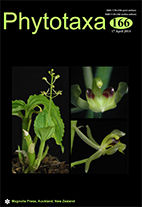Abstract
Historically, many authors of regional accounts of the Leguminosae (Fabaceae) tribe Cercideae divided the caesalpinioid genus Bauhinia sens. lat. into several segregate genera including the genus Phanera. However, during the last fifty years, Bauhinia has more often been recognised as a broadly circumscribed taxon with Phanera reduced to a subgenus of Bauhinia sens. lat. The reinstatement of Phanera at generic rank based on molecular and morphological evidence has now been widely accepted, resulting in the need for new combinations in Phanera for many taxa described in Bauhinia. Some of those names have been published recently by other authors so here we make the necessary combinations for those taxa still lacking names in Phanera. In addition, we include all published Phanera binomials and trinomials here and to each assign a status of accepted name, synonym or excluded name. The recent reinstatement of the New World genus Schnella to which c. 40 Phanera species were moved transforms Phanera into a strictly Asian and Australasian taxon. Phanera can be distinguished from Bauhinia sens. str. and from Schnella by a combination of morphological characters, but the morphological boundary with another closely related Asiatic genus, Lasiobema is unclear and warrants further investigation. We present a table comparing morphological characters of Phanera, Schnella, Lasiobema and Bauhinia sens. str.

